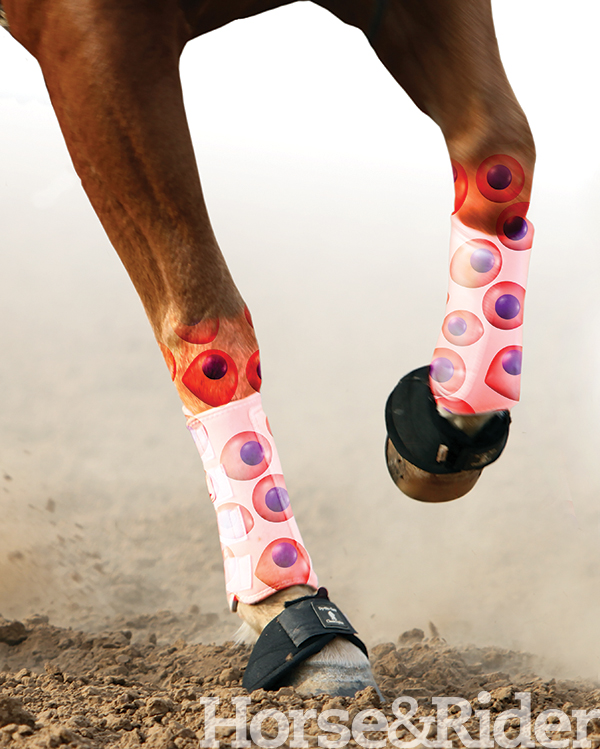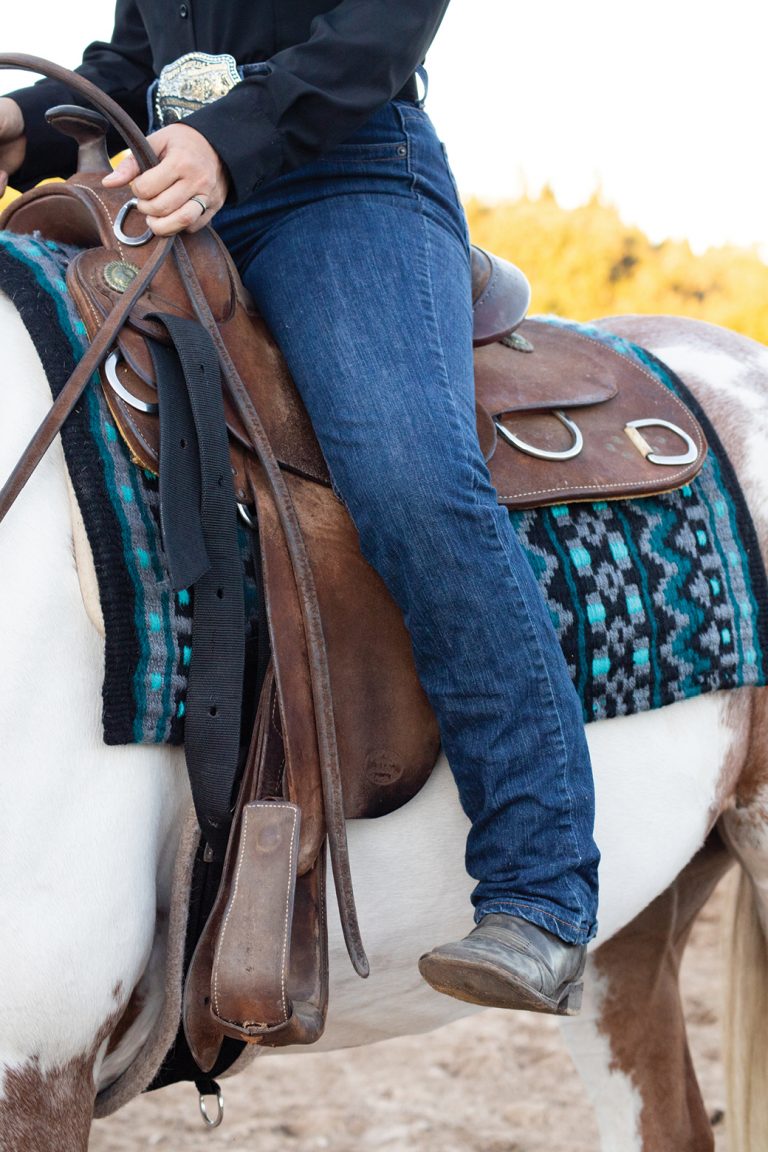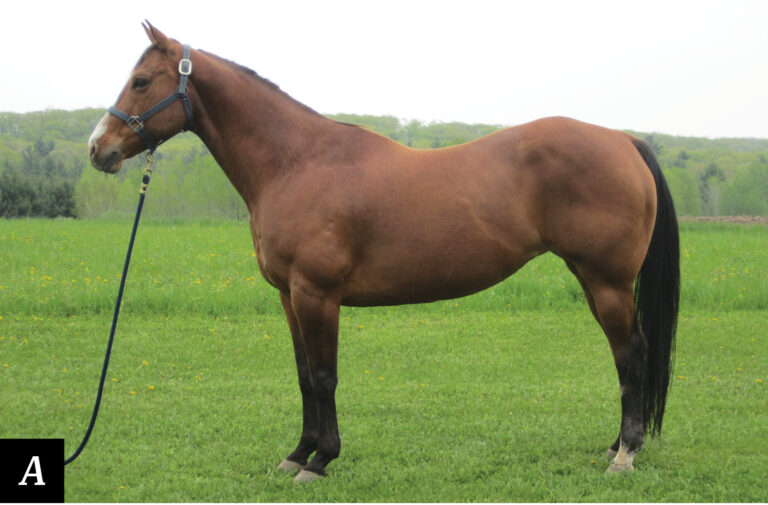You’re standing in your vet’s office when he delivers the blow. “Your horse has a tendon injury, and it could be extremely difficult to heal.” Not only does your riding plan come to an abrupt end until your horse recovers, but you’re also faced with making decisions about a treatment plan. Do you want to take the conservative road, with a rest and rehabilitation program that counts on Mother Nature to do her best? Or should you explore more aggressive treatment options like stem cells or platelet-rich plasma that might expedite your horse’s recovery and increase his chance to get back in the game?

Horse owners face a lot of confusing information about regenerative medicine, with terms like “pluripotent” and “mesenchymal” making things even harder to understand. So, what’s it really all about? And will it help your horse? In this article, I’ll answer these practical questions and more, beginning with the basics.
Question 1: What is regenerative medicine?
It includes a group of treatments that use the body’s own cells to help restore injured or damaged tissues—such as your horse’s torn tendon. Unlike more conventional medications that typically block pathways of disease or injury in an effort to halt damage, regenerative treatments provide cells that encourage tissues to regenerate or “self renew.” The goal is to take advantage of the body’s natural healing processes to reproduce healthier, more functional tissues as an end result.
For example, tendons often don’t heal well because they have poor blood supply and a limited population of cells available to aid recovery. A tendon injury often heals with scar tissue that has less elasticity than a healthy tendon and is prone to re-injury. Conventional treatments, such as anti-inflammatory medications, help block inflammation to reduce its damaging effects while the tendon heals. Regenerative treatments such as a stem-cell injection provide cells that can actually differentiate into normal tendon tissue, as well as growth factors that help encourage tissue repair.
Question 2: What different types of treatments are available?
There are two primary types of regenerative treatments currently being used in horses: stem cells and platelet-rich plasma (PRP).
When you hear about stem cells, chances are you think “embryonic stem cells.” This is in part because they’ve been the source of so much controversy in human medical circles, but also because it’s easy to understand that the cells that make up a developing embryo have the potential to become any type of tissue in an adult horse. What you might not realize, however, is that similar cells are also present in adult tissues. In a sense they’re “standing by” in your horse’s body, waiting to differentiate into different types of cells when needed. These adult-derived cells are called mesenchymal stem cells, and they’re most available for treating your horse’s injury.
PRP is likely to be suggested to help heal your horse’s tendon injury. Platelets are cells that circulate in your horse’s bloodstream and are the first responders if your horse is injured. Most commonly, we think of platelets as the cells that initiate the cascade of events that clots blood and stops bleeding. They also release a number of different growth factors that stimulate healing of healthy tissues. They help with the formation of new blood vessels (angiogenesis) and connective tissues (fibroplasia), and recruit stem cells to the area to help enhance healing.
Be aware that stem cells and PRP are most commonly used to treat soft-tissue injuries, although they might also be recommended if your horse has a joint injury, laminitis, a severe wound, or even an eye injury. The potential for these treatments is as limitless as the cells’ ability to differentiate into a variety of tissues.
Question 3: Where do the cells come from?
Stem cells are usually derived from your horse’s own body (autologous), although sometimes they’re collected from other animals (allogeneic). The first attempts with regenerative medicine in horses were done using bone marrow, commonly collected from the horse and immediately re-injected to stimulate healing. As technology progressed, researchers learned that the stem cells could be extracted from the bone marrow and cultured in a laboratory for several weeks to multiply their numbers and optimize their effects. Cultured, bone-marrow-derived stem cells are still commonly used.
Bone marrow is collected either from the horse’s tuber coxae (the point of his hip) or from his sternum (chest bone). As horses age, it can be more difficult to obtain good samples from the tuber coxae, leaving the sternum the only choice for collection. This presents some danger to the horse if a collection needle accidentally penetrates his chest cavity during the collection process. Finally, with age the amount and quality of the bone marrow can decline, making it difficult to obtain adequate numbers of stem cells at all in horses over 15 years of age.
Researchers have learned that stem cells can also be obtained from fat (adipose-derived stem cells), which is much easier and less risky to harvest. There’s disagreement about whether adipose-derived stem cells are as “good” as those obtained from bone marrow. Many practitioners believe bone-marrow-derived cells are the best choice, but some studies indicate adipose-derived cells could be even better. Many practitioners who use stem-cell therapy opt for bone -marrow-derived stem cells in younger horses and adipose-derived stem cells for horses over 15.
A relatively new and promising source of stem cells is from amnion—the sac that surrounds a developing fetus and passes with the placenta during birth. Stem cells derived from amnion appear to share characteristics of both embryonic and mesenchymal stem cells. These stem cells can be collected, cultured, and banked—meaning they can be available immediately without the waiting period required to culture stem cells collected from the horse’s own body. This could be especially beneficial, as most research indicates that stem-cell treatment as soon as possible after injury is likely to have best results.
Finally, platelet-rich plasma is obtained by either centrifuging or filtering a sample of your own horse’s blood. It’s also immediately available for treatment, with no waiting period.
Question 4: Does it work?
This is the biggest question. And the real answer is:, We don’t know. Although there are many case studies and anecdotal reports of successful treatment using both stem cells and platelet-rich plasma, there’s little solid science available to prove these treatments are effective. Not only that, there are no clearly accepted standards for how cells are collected and processed, or how treatments are administered. For example, studies have shown that platelets require activation to release growth factors, yet many practitioners who regularly use PRP for therapy don’t do any form of activation prior to injection.

Proving efficacy or determining the ideal methods for collecting, preparing, and administering these treatments presents a significant challenge, especially with autologous products (derived from the horse being treated), where every horse is different. Stem cells or PRP collected from one horse may vary greatly from those collected from another, making research extremely difficult to carry out. Although regenerative medicine is a hot research topic these days, we’re a long way from having all the answers.
Does this mean regenerative therapies have no benefit? Absolutely not. In fact, these treatments can significantly help with healing—and many experienced practitioners believe they’ve seen positive results. Still, if you decide to treat your horse’s tendon injury with stem cells or PRP today, you should accept that you are taking a leap of faith.
Question 5: Is it safe?
There are a number of potential complications to consider when making your decision. If your veterinarian recommends stem cells, ask if he’ll collect bone marrow. Remember that collection from your horse’s sternum can be dangerous—and may be necessary if your horse is older. If you’re concerned about this risk, ask if adipose-derived or amniotic stem cells might be an option to consider.
By their very nature, stem cells are capable of differentiating into many different tissues, and there’s no guarantee they won’t differentiate into something they’re not supposed to—such as extensive scar tissue or calcification instead of healthy tendon. Practitioners who’ve used a lot of stem cells report cases of extensive scar tissue formation following stem cell injections, which makes an injury much worse than it was before the treatment.
Finally, stem-cell injections can stimulate an acute inflammatory response (referred to as a “flare”) that can cause severe discomfort for a period of time following treatment. Platelet-rich plasma can also cause a flare, although it’s not as likely, and typically not as severe as those seen following stem-cell treatments.
Question 6: How much does it cost?
Cost for treatment ranges from $500 to $800 for platelet-rich plasma to several thousand dollars for cultured stem cells, and multiple treatments might be recommended. These costs typically don’t include diagnostic imaging like radiographs, ultrasound, or MRI that might be recommended to make a diagnosis and monitor healing progress.
Question 7: Will my horse’s injury heal without it?
Many soft-tissue injuries heal quite well with a slow, careful rehabilitation program, so be sure to ask your veterinarian about your horse’s chances for healing without regenerative medicine before deciding whether or not to treat. And be aware that these treatments generally don’t mean your horse will heal any faster—just that he might heal “better.”
So should you sign your horse up for a stem-cell or PRP injection? Consider cost, risks, and your horse’s chances for recovery if you don’t opt for the treatment. If funds are limited and your horse has a minor tendon injury, it might make sense to just say no. If you’re interested but concerned about risk or cost, you might first consider PRP for its lower costs and risk of complications.




